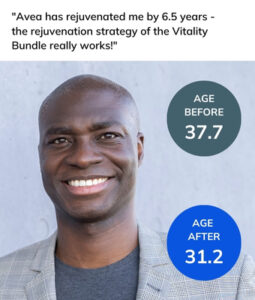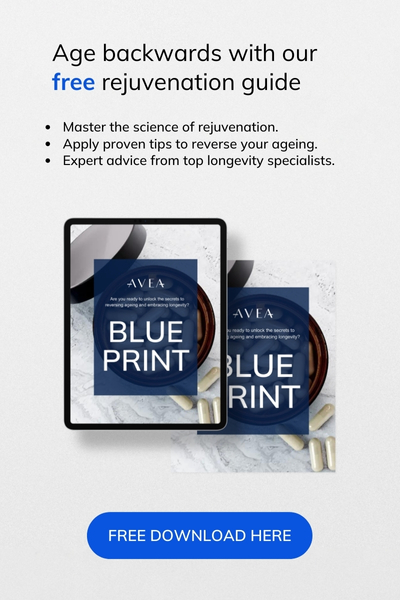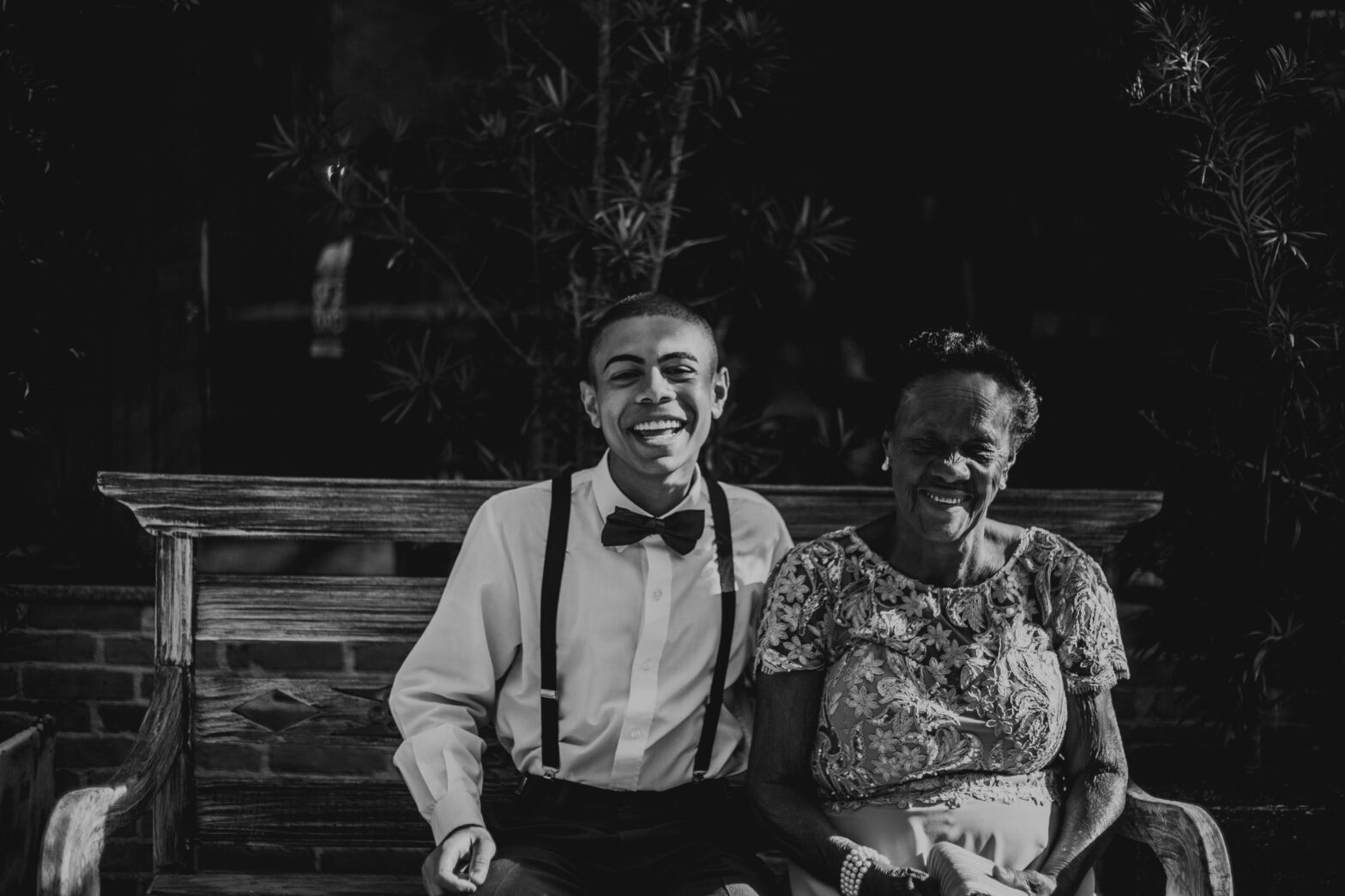Layne Norton, PhD in nutritional sciences, bridges the gap between academic research and everyday fitness enthusiasts.
Tackling misinformation prevalent on social media and in the news, he simplifies complex health data for the public. His personal journey, from being bullied as a youth to becoming a confident bodybuilder, deeply informs his coaching approach.
Initially uncertain about a career in fitness, Norton started writing online articles and giving nutrition advice, which eventually blossomed into a full-time online consultancy driven by word-of-mouth success.
If you’re looking to lose weight and gain muscle, Layne’s insights are invaluable. With a perfect blend of science and personal experience, he offers practical advice that cuts through the noise, making it easier for you to achieve your fitness goals.
Dive into his world of evidence-based fitness and discover how you can transform your body and life with Layne’s guidance.
In this article
FREE anti-ageing guide

- Master the science of rejuvenation.
- Apply proven tips to turn back the clock.
- Transform your health with top longevity specialists.
Started from the bottom
Layne Norton’s commitment to accessible fitness education and empathetic coaching is deeply rooted in his own childhood experiences with bullying.
This difficult period not only motivated him to transform his physical health through weightlifting and bodybuilding, but also ignited a passion for helping others overcome their struggles.
Despite achieving significant success, Norton openly acknowledges that the scars from his past challenges continue to influence his self-perception and decision-making.
His journey is an example of a powerful transition from vulnerability to strength, shaping his life’s mission to empower others through knowledge and support. If Layne can turn his struggles into triumphs, imagine what you can achieve on your own path.
Why is therapy important?
Therapy led to Layne being diagnosed with “binge PTSD,” a term his therapist used to describe his significant, non-combat related trauma from childhood bullying.
Initially, Layne resisted this diagnosis, as he associated PTSD solely with war veterans. But when his therapist explained that trauma is relative and deeply personal, he started opening up.
He realised how his trauma affected his interpersonal relationships, making him overly defensive when receiving feedback, interpreting it as criticism similar to his childhood experiences.
He also understood how his defence mechanisms, which were once survival tools, became maladaptive at some point. Now, he focuses on mindfulness and coping strategies, to reassure himself that he’s safe.
Reflecting on his journey, you might consider how unresolved issues could be impacting your own life, health, and self-perception. Remember, achieving your goals often begins with nurturing your mental well-being.
How does obesity affect mental health?
In the podcast with Steven in the Diary of a CEO, Layne highlights how his understanding of obesity evolved significantly during his academic and professional journey.
Initially, he viewed obesity as a simple lack of discipline. But his deeper observations and studies on the subject revealed something else.
Most people, who struggle with their weight, often exhibit discipline in other areas of their lives. Lack of discipline was never the issue.
For instance, obesity often correlates with a heightened reward response to food, which can serve as a coping mechanism similar to other addictions. Addressing obesity requires understanding underlying psychological factors.
That’s why Layne advocates for awareness and self-care in managing life’s challenges and stresses.
It first begins through a psychological approach.
How to overcome food addiction?
Understanding your psychological relationship with food addiction is crucial to overcoming it. To be able to identify your triggers and patterns, you need to start by examining your daily routines and struggles.
Remember to combine accountability with empathy. Excessive criticism can lead to demotivation and dishonesty. The point is to interrupt your autopilot behaviours, not lead you into depression.
For instance, placing a note on the cabinet asking, “Am I hungry or upset?” and locking the door from the inside to create a pause for reflection before accessing the kitchen. Self-awareness is the very first step to behavioural change.
Reverse your age by 6.5 years like Ibrahim

- Explore the secrets behind Ibrahim’s transformation.
- Discover simple, proven strategies to improve vitality.
- Understand the role of supplements in reversing biological age.
Why to prevent big goals from hindering your success?
Setting monumental goals most of the time ends up with one grappling with failure and self-reproach. Maintaining self-confidence largely hinges on fulfilling the promises made to oneself and accomplishing the set objectives.
Instead, opt for realistic ambitions. For instance, if you’re new to regular gym visits, start with manageable goals to gradually build your confidence.
Drawing from personal experience, Layne shares his journey from a novice to setting a world record in the squat, lifting 668 lbs in the 205 lb weight class, despite initial struggles and intimidation by the exercise. His success, he noted, came not from easing the challenge, but from improving his capacity to manage it.
This approach helps you mirror the unexpected challenges in life. Life doesn’t necessarily become easier, but you can become more adept at handling difficulties. The confidence can be developed as a product of consistent effort and perseverance.
Be careful of overreaching early on. This could lead to discouragement. Instead, plan a gradual increase in challenges that can ultimately lead to achieving what once seemed unattainable.
How to start going to the gym?
Do you want to lose weight? Do you want to gain muscles? Focusing on the underlying reasons for wanting change will help you turn your life around.
For those heavily influenced by their environment, distancing from old habits and friends can be necessary yet challenging, especially when former peers attempt to undermine their progress. People overcoming addiction might need to reshape their identity and social circles.
Layne talks about his brother’s journey through addiction, incarceration, and profound personal losses, which led to a moment of clarity about his repetitive losses.
This awakening is common amongst those who decide to radically transform their lives, driven by sheer exhaustion from their current circumstances.
It’s also important to have a strong motivational foundation. Do you desire to be present for your children?
On tougher days, have practical strategies to keep your motives in focus.
How about changing your phone’s background to an image that resonates with your personal goals?
What are calories in and calories out?
The internet is filled with common misconceptions surrounding dieting and weight loss, particularly the difference between the concept of ‘calories in, calories out’ and the practice of counting calories.
Everybody knows that saving money means earning more than you spend. Actively keeping a budget wouldn’t change anything if you do the opposite.
Calories are the same.
Calories in refers to the food consumed, specifically focusing on the metabolisable energy – the energy available from the food after digestion and metabolism.
Calories are a measure of energy potential within food’s chemical bonds. They are not a physical substance you can see under a microscope, they represent the energy introduced into the body.
Calories out involves several aspects of energy expenditure.
The primary component is the basal metabolic rate (BMR), which is the energy required for basic biological functions if you were at rest all day.
This accounts for the majority of daily calorie burn, ranging from 50 to 70%, and varies depending on individual activity levels and body composition.
BMR is significantly correlated with lean mass, meaning more muscular individuals generally have a higher BMR.
Then comes the thermic effect of food (TEF), which is the energy required to process and absorb nutrients from food.
Different macronutrients have varying thermic effects. Proteins have a higher TEF than carbohydrates or fats. This explains why not all calories are equal, as the body expends different amounts of energy to metabolise different types of food.
Why is the thermic effect of food so important?
The thermic effect of food (TEF) represents the energy expenditure involved in processing different macronutrients.
- Dietary fats have a TEF of about 0 to 3%, meaning if you consume 100 calories from fat, you retain about 97 to 100 of those calories.
- Carbohydrates have a TEF of 5 to 10%, with actual energy retention affected by fibre content; more fibre means a higher TEF and lower metabolisable energy.
- Protein stands out with a TEF of 20 to 30%, so consuming 100 calories of protein results in about 70 to 80 calories being used.
There are no “negative calorie” foods—foods still provide more energy than they need to be processed.
TEF contributes roughly 5 to 10% to the daily energy expenditure.
Beyond TEF, there’s basal metabolic rate (BMR) and physical activity, which can be categorised into exercise and non-exercise activity thermogenesis (NEAT).
Non-exercise activity thermogenesis includes unconscious movements like fidgeting or pacing, and varies amongst individuals based on their metabolic characteristics.
This changes with lifestyle adjustments; for example, weight loss can reduce NEAT significantly, leading to lower overall energy expenditure.
This dynamic interaction between calorie intake and the various components of calorie output—BMR, TEF, NEAT, and exercise—is crucial to understanding weight management.
And these factors are not static. They adapt to changes in diet and physical activity, influencing weight loss success.
What is metabolic adaptation?
Metabolic adaptation is a phenomenon observed when there’s a significant drop in basal metabolic rate (BMR) following weight loss.
For instance, with a 10% reduction in body weight, one might experience an average 15% decrease in BMR, which is more than expected, based solely on the loss of body mass.
Taking a personal example, Layne shares that his measured BMR is approximately 2,000 calories per day, with a total daily energy expenditure of around 3,400 calories when including all forms of activity.
However, if he were to lose 10% of his body weight, not only would his BMR potentially drop by 300 calories (15% of 2,000), but his non-exercise activity thermogenesis (NEAT) might decrease by another 400 calories.
This cumulative reduction of 700 calories could transform what was initially a significant calorie deficit into merely a maintenance level of caloric intake.
He emphasises that this adjustment doesn’t occur immediately, but progressively over time.
This adaptation is why many people experience a plateau in their weight loss efforts, despite maintaining the same diet and exercise routine. To counteract this, further adjustments are necessary to sustain a calorie deficit.
Now, it’s time to touch on the physiological responses that complicate sustained weight loss.
Do you also feel more hungry, especially when you’re dieting? Might be because of an increase in hunger hormones.
Weight loss is challenging and often contribute to weight regain, as the body attempts to return to its original weight. And sugar is the main culprit here.
Artificial sweetness and calorie misconceptions
If you’re not in calorie surplus, you’re not magically creating energy. Might as well be an interest to NASA for energy conservation on long space flights. Many people do not know where they end up on the calories in, calories out spectrum.
A 1992 study highlighted discrepancies between reported and actual calorie intakes in obese subjects.
Participants reported consuming an average of 1,200 calories per day, but measurements showed they underreported by about 50% and over-reported their physical activity by nearly the same margin. This, he suggested, isn’t necessarily lying but a misunderstanding of portion sizes and calorie density.
Even dietitians, he noted, can underestimate their calorie intake by about 10%.
According to Layne, people generally think they are more active than they are. This makes it a tough conversation to have.
Rather than simply telling people to “move more and eat less,” which is oversimplified advice akin to saying “earn more and spend less,” he advocates for consistent monitoring of body weight as a more effective strategy. This approach helps people self-correct, similar to budget monitoring in a business.
Think of weight management like managing a business’s quarterly reports. By tracking weight loss over time, you can adjust your diet and exercise strategies to continue making progress, adapting to plateaus by re-establishing a calorie deficit through diet, increased activity, or both.
Is sugar addictive?
According to Layne, sugar itself isn’t addictive, but hyper-palatable foods combining sugar, fat, salt, and specific textures may exhibit semi-addictive properties.
For example, cakes and ice cream, often labelled as addictive, contain more fat than sugar. Layne explains that these foods can create a “sugar cycle,” where consuming them increases daily cravings until the cycle is broken. Avoiding sugar for several days can help subsidise these cravings.
Foods like chocolate are craved not only for their sugar content but also for their fat, contributing to their appealing texture. Psychological factors play a much bigger role in perceived sugar addiction.
Are artificial sweeteners better or worse than table sugar?
When it comes to artificial sweeteners, some studies show a correlation between their use and higher body weights, but controlled trials suggest that switching to diet soda can aid weight loss without raising insulin levels.
The main benefit of artificial sweeteners is reducing calorie intake, which helps in weight management. However, it’s not about consuming more sugar or overdoing artificial sweeteners; moderation is key, as all sugars are essentially the same.
Note that whilst 80% of studies found no link between artificial sweeteners and cancer, these findings are less reported because negative news tends to attract more attention.
Regarding gut health, whilst some sweeteners may affect gut bacteria, the impact could be beneficial, neutral, or harmful. Basically, if you want to reduce your sugar intake, the benefits of switching to diet drinks generally outweigh potential risks.
What supplements does Layne recommend?
- Creatine Monohydrate
He advocates creatine monohydrate as a top supplement due to its extensive research support for enhancing strength, performance, and body composition.
Recognised for its cognitive and mood benefits, creatine is not only effective but also cost-efficient, with a long history of safe use.
Creatine works by helping regenerate ATP during high-intensity exercise, boosting anaerobic performance and potentially helping in muscle hydration and strength.
- Caffeine
Layne also emphasises on the benefits of caffeine, particularly for those who can handle it without adverse effects.
Caffeine is the original cognitive enhancer, consistently shown to improve performance both mentally and physically.
Studies show that certain people can perform better on cognitive tasks and have enhanced physical performance when they consume caffeine.
But there are also a few trade-offs, particularly regarding caffeine’s half-life and its potential impact on sleep.
Caffeine consumed in the morning could affect sleep quality at night. So, if you consume caffeine, it should ideally be ingested at least nine hours before bedtime to ensure it doesn’t disrupt sleep, as the majority of it would be metabolised by then.
Is intermittent fasting recommended for losing weight?
Studies show that switching to intermittent fasting often leads to more weight loss and better health markers compared to non-fasting. This is mainly because it helps create a calorie deficit, not because the fasting process itself is magical.
Intermittent fasting increases autophagy—a process that recycles cellular components—similar to simple calorie restriction and regular exercise.
Whilst prolonged fasting might benefit conditions like disease or inflammation, more research is needed. The effectiveness of fasting generally hinges on overall calorie reduction, rather than fasting alone.
Autophagy is always occurring; it’s the relative rate that changes with different states such as fasting, eating, and exercising.
How can exercising help with losing belly fat?
Most people are unsure about the role of exercise in weight loss. Did you know that the most Googled queries related to weight loss aren’t solely about diets like keto, but rather about how to lose belly fat specifically?
Here, you’d want to understand the distinction between visceral fat (which surrounds your organs), and subcutaneous fat (which is just under your skin).
Visceral and liver fat are more metabolically harmful than subcutaneous fat. Yet, the strategies that reduce subcutaneous fat are generally the same as those that reduce visceral fat.
Layne advises focusing on significant, sustainable health strategies first—like major dietary and exercise changes—before diving into specifics like targeted fat loss.
Think of it as picking up large rocks before the pebbles; prioritising the most impactful strategies ensures better overall results. Consistent, overall body fat loss will eventually lead to losing belly fat as well.
Exercise, even without caloric restriction, can specifically help reduce liver and visceral fat. This makes physical activity a crucial component of any weight loss strategy, not just for its immediate effects on body weight, but for targeting harmful internal fats as well.
How can exercising help with eating habits?
Exercise influences eating habits by suppressing appetite and improving regulation of hunger and satiety.
Despite increased hunger hormones post-exercise, studies show that physical activity often leads to better weight management.
For instance, for every 100 calories burned, about 72 are effectively lost. Regular exercise helps maintain lean mass and boosts overall energy expenditure. Historical studies, such as those with Bengali workers, indicate that more active individuals intuitively balance their energy intake with activity levels.
Is the keto diet recommended for losing weight?
The ketogenic diet, effective for epilepsy by providing alternative brain fuel, reduces seizures.
For weight loss, it works similarly to other diets by creating a calorie deficit. Studies show no significant difference in fat loss between low-carb and low-fat diets, despite higher fat oxidation in ketogenic diets.
Ultimately, diet success should be measured by outcomes like fat loss, not just metabolic processes. Randomized controlled trials (RCTs) are crucial for understanding these effects, eliminating ‘healthy user bias,’ although they are complex and challenging to scale.
The value of failure in achieving success
Reflecting on his own experiences and those of prominent business leaders like Jeff Bezos of Amazon and Thomas Watson of IBM, Layne emphasises the concept of failure as a pivotal aspect of learning and growth.
He quotes Kobe Bryant, emphasising that success and failure both demand a return to the process: whether you win or lose, the same commitment to the next day’s efforts is required. This resilience is key to long-term achievement.
Confidence is the willingness to embrace uncertainty. Whilst failure is often uncomfortable and stressful, it frequently precedes significant personal and professional breakthroughs. The greatest losses come not from trying and failing, but from ceasing to try at all.
So don’t go after the pursuit of quick fixes or “diet hacks.” True progress and fulfilment, comes from enduring the often challenging process of change, which teaches invaluable lessons about perseverance and self-discovery.
What is Ozempic used for?
Ozempic is effective in obesity treatment by mimicking the satiety hormone GLP-1, reducing appetite, and potentially decreasing body weight by 15-20%.
Despite its benefits, Ozempic can cause side effects like nausea. Some users experience a long-term reduction in food preoccupation, suggesting changes in brain chemistry or behaviour.
Combining Ozempic with nutritional guidance and exercise can lead to sustainable weight loss. Critiques of muscle loss are similar to any diet without resistance training.
Whilst long-term impacts are understudied, the immediate benefits for those severely affected by obesity are undeniable.
How true is the fitness industry?
Dr Layne has mixed sentiments within the fitness industry, recognising both its value and flaws.
A major issue is the low barrier for entry, allowing unqualified individuals to become trainers. Often, people choose trainers based on appearance rather than expertise, which can be misleading.
Despite the visual bias, expertise doesn’t necessarily correlate with fitness appearance. The industry tends to favour quick fixes over sustainable methods, which isn’t ideal for long-term health.
To combat misinformation, I’ve started a service to translate complex research into understandable terms, encouraging a more informed approach to fitness that focuses on credible information and long-term goals.
Why should you do resistance training?
Resistance training can significantly improve your quality of life, regardless of when you start.
Layne shares a personal anecdote about experiencing lower back pain upon waking, challenging the mindset that such pains are an inevitable part of ageing.
Instead of accepting discomfort, actively engaging in exercises to strengthen affected areas can be beneficial.
Contrary to common advice to cease activity when in pain, Layne argues that pain does not necessarily stop with inactivity.
He advocates for continued, appropriately managed activity to maintain strength, as being strong can coincide with experiencing pain.
Pain perception is influenced by both psychological and physical factors, making it important to understand its complexity. Resistance training enhances overall quality of life and health resilience, regardless of age.
















